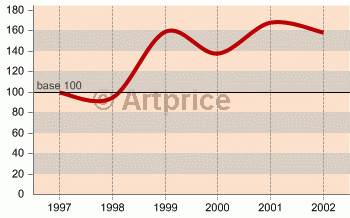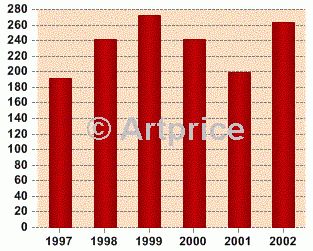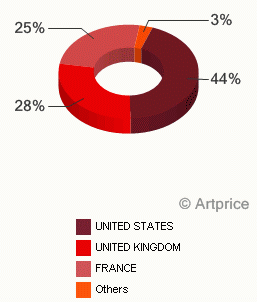Raoul Dufy
[2003年03月13日]
Visitors can admire the wide range of Raoul Dufy’s work at the Musée Maillol in Paris until June 16 2003. Dufy was one of the most prolific and varied painters of the last century. Most prized at auction are his light and colourful canvases.
Dufy’s work is nothing if not heterogeneous. He saw active service with many of the avant gardes of modern art. He went swiftly from his classical training in the studio of Léon Bonnat, at the Ecole Nationale des Beaux-Arts, to window shopping in the galleries of rue Lafitte, then thick with canvases by Pissaro, Monet and Manet. But his real revelation as an artist came in 1905 with his discovery of Matisse’s Luxe, Calme et Volupté at the Salon des Indépendants. From then on he threw in his lot with fauvism. He used pure simple colours and a Cézanne-like treatment of space. Gradually, working in this vein brought him closer and closer to cubism and like Braque he narrowed his chromatic range to create tightly constructed and rather austere works. From 1913 however he dropped these experiments. His drawings regained their suppleness and time spent in the Mediterranean brought him back into contact with striking colours. From the 1920s he adopted the fluid style in his watercolours and oils on canvas that would remain unchanged until his death.
Artworks at auctions
Fanny Guillon-Lafaille, author of the Catalogue raisonné of his drawings, claims Raoul DUFY produced nearly 3,500 paintings, 3,000 big drawings and 6,000 watercolours. In 2002, 269 drawings and watercolours came up for auction, but less than one fifth that many canvases. His cubist period is largely ignored at auction, but his rich and freshly coloured works from the 1920s and later are massively popular. The brighter the colours the higher the price of a Dufy watercolour. An intensely coloured work can go for two or three times as much as a similar but pale piece. The most popular subjects are races, regattas and flowery still lifes. Still today, 20% of Dufy’s works at auction go for less than EUR 1,400. But for a good canvas, prices go much higher. The top hammer price in the last decade was made when the Olga Carré legacy was sold in Paris: EUR 780,000 for Le Moulin de la Galette (1943). This, though, is still well below the record for a Dufy. In March 1990 Guy Loudmer knocked down 14 July au Havre, 1907, for EUR 2.1 million.
The market places
France is still the biggest market for Dufys, handling 44% of lots between 1999 and 2002. French auctioneers tend to have more drawings and prints than other markets. The US and UK concentrate on large format paintings post 1920. Any canvases estimated at more than EUR 100,000 are generally sold at prestige sales held at Sotheby’s or Christie’s. In their Impressionism and Modern Art auctions the two auctioneers generally have around a dozen canvases for sale between them.
Buy or sell
February’s London auctions proved once again that bidders are uninterested in Raoul Dufy’s early works. Of eight paintings put up, four were bought in, including three from before 1910. Selective buyers are nonetheless ready to bid hard for the best pieces, which is why Dufy’s benchmark price has risen by 58% since 1997. Recently though, his work on paper has lost value, while his canvases have marked time. In 2002 17% of paintings were bought in, but 30% of drawings and water colours. For this prolific painter, once again, it is the rarity of the product that guarantees the investment. Investing in one of the finest paintings from the 1930s or 1940s should yield steady investment gains over the long term, particularly as we are still a long way short of the 1990 record. The value of works on paper is far less stable. Prints are particularly volatile. Apart from the quality of preservation of the print, prices for nondescript lots can vary hugely from auction to auction. For instance, one print of a posthumous edition called Baigneuse went on March 11, 2002 in Sydney for EUR 134 and a week later in Vancouver for just EUR 90.
Raoul DufyArtprice Indexall media categories, base January 1997 = 100, currency : EUR  Raoul Dufy Number of lots sold
Raoul Dufy Number of lots sold  Raoul Dufy Auction sales turnover 1999-2002 / weight by country
Raoul Dufy Auction sales turnover 1999-2002 / weight by country  © Artprice
© Artprice




 0
0
